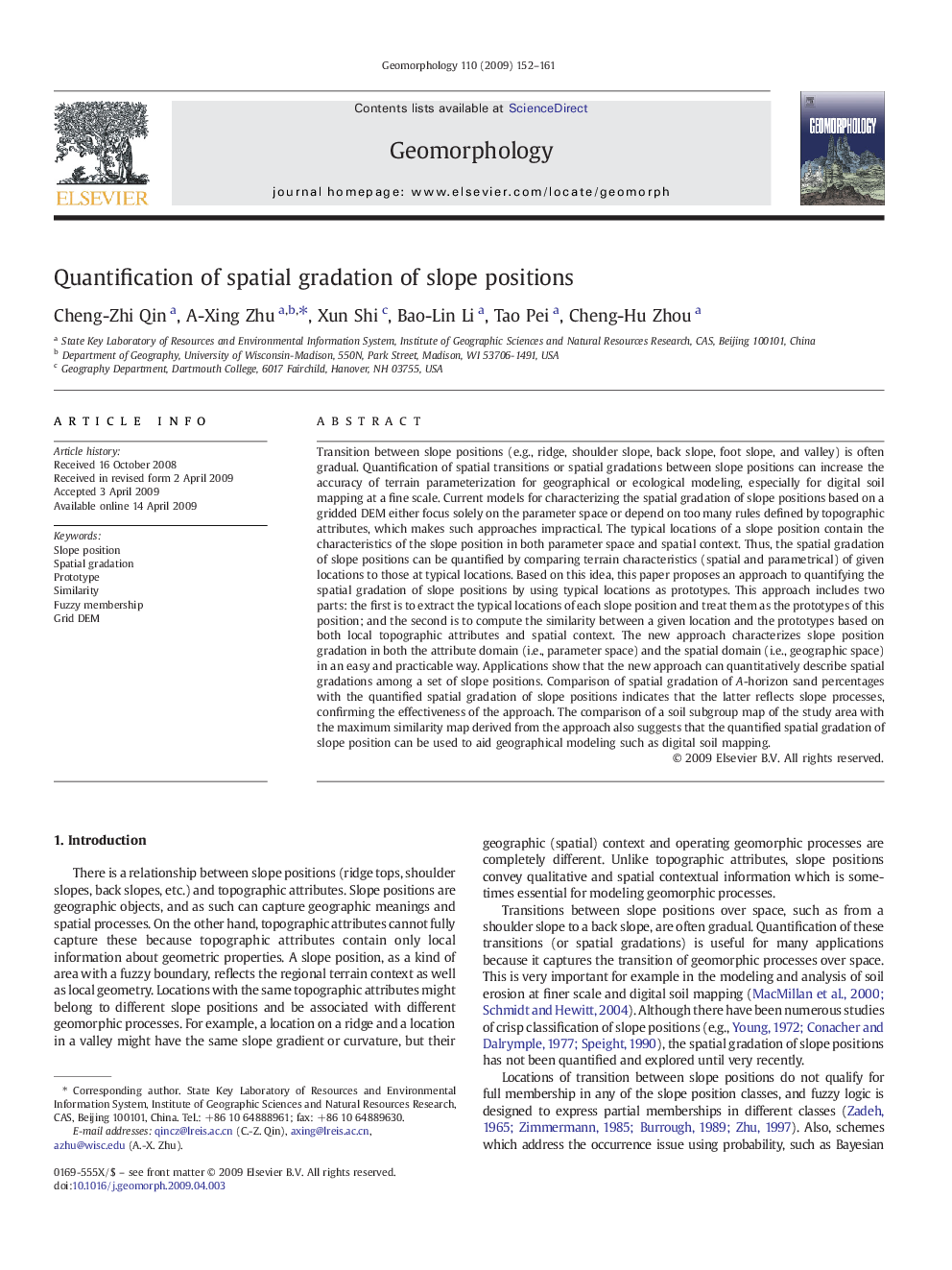| Article ID | Journal | Published Year | Pages | File Type |
|---|---|---|---|---|
| 4686130 | Geomorphology | 2009 | 10 Pages |
Transition between slope positions (e.g., ridge, shoulder slope, back slope, foot slope, and valley) is often gradual. Quantification of spatial transitions or spatial gradations between slope positions can increase the accuracy of terrain parameterization for geographical or ecological modeling, especially for digital soil mapping at a fine scale. Current models for characterizing the spatial gradation of slope positions based on a gridded DEM either focus solely on the parameter space or depend on too many rules defined by topographic attributes, which makes such approaches impractical. The typical locations of a slope position contain the characteristics of the slope position in both parameter space and spatial context. Thus, the spatial gradation of slope positions can be quantified by comparing terrain characteristics (spatial and parametrical) of given locations to those at typical locations. Based on this idea, this paper proposes an approach to quantifying the spatial gradation of slope positions by using typical locations as prototypes. This approach includes two parts: the first is to extract the typical locations of each slope position and treat them as the prototypes of this position; and the second is to compute the similarity between a given location and the prototypes based on both local topographic attributes and spatial context. The new approach characterizes slope position gradation in both the attribute domain (i.e., parameter space) and the spatial domain (i.e., geographic space) in an easy and practicable way. Applications show that the new approach can quantitatively describe spatial gradations among a set of slope positions. Comparison of spatial gradation of A-horizon sand percentages with the quantified spatial gradation of slope positions indicates that the latter reflects slope processes, confirming the effectiveness of the approach. The comparison of a soil subgroup map of the study area with the maximum similarity map derived from the approach also suggests that the quantified spatial gradation of slope position can be used to aid geographical modeling such as digital soil mapping.
